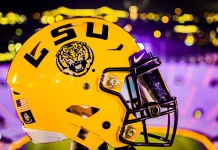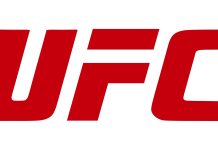In the first installment of a three-part series, I interview Michael Kelly, the Vice President for Athletics at the University of South Florida (USF). We delve into the challenges of being an athletic director at a major university during this transformative time in college sports. We discuss important topics such as Name, Image, and Likeness (NIL), the transfer portal, the College Football Playoffs, and the need to adapt to the rapidly changing landscape of college athletics.
Kelly has a diverse background prior to his return to USF, where he previously served as the Assistant Athletic Director. He was also the Chief Operating Officer of the College Football Playoff, held leadership positions with the Atlantic Coast Conference, and directed Super Bowl host committees in Jacksonville, Tampa, and South Florida.
PART ONE OF THE Q & A –DEALING WITH THE NEW NORMAL IN COLLEGE ATHLETICS
Williams: Michael, I have to say, after my forty-some years in college sports—as a producer, director, and sometimes a writer—being a college athletic director has to be the most challenging job in sports: navigating the complexities of the new normal.
You have a budget of around one hundred million dollars, which you must balance between the 17 men’s and women’s teams that USF participates in at the major college level. Add to that the transfer portal, NIL, and all the changes happening going on in college sports making your role must be significantly different from what you imagined it would be five or ten years ago.
Kelly: Absolutely, you’re right. When I took on this role just under seven years ago, my expectations of what being an athletic director would involve have changed significantly. It’s fascinating but also challenging. It requires a lot of adaptability; you need to be nimble.
However, I find it intellectually stimulating, and I’m grateful for the support we receive from our staff, administration, and coaches. Everyone is being very adaptive and actively looking for ways to improve. We often say we’re trying to create a model athletic department for modern times.
The University of South Florida is a relatively young institution, having been established in 1956, not too long ago. This youth allows us to be better positioned to adapt because we don’t have centuries of tradition to navigate. We’ve only been competing in Division One football since 1997, so we are a very young program.
Williams: USF has high academic standards, and I know you and the team emphasize academics in the athletic department. How do you navigate the ever-changing landscape of college sports in 2025?
Kelly: When you have an AAU institution like USF, located in the largest market of Tampa Bay, it’s an exciting time. We are really optimistic about our growing and progressive athletic department. However, it’s important to acknowledge the history of the NCAA.
Since its establishment in 1906 and until about five or six years ago, the organization maintained a certain level of stability. When you think about it, everything was based on principles like competitive balance and amateurism. With the exception of Title IX, which was introduced in 1972, and a few adjustments to postseason play, the rules have largely remained unchanged over the years.
Williams: How does an athletic director deal with the new rules, the transfer portal and NIL?
Kelly: The challenges we’re facing are largely due to lawsuits and the adaptation to new benefits that, in my opinion, student-athletes deserve. A lot of disruption has occurred within a very short timeframe. It’s not just one specific factor; rather, it’s the fact that all these changes are happening simultaneously over the past five years. This situation has become particularly difficult to navigate.
Whether we’re discussing Name, Image, and Likeness (NIL) or the transfer portal, it’s really the combination of these two developments occurring at the same time, alongside the lack of clear regulations, that has created this turmoil. We’ve shifted from having no free agency in college sports to experiencing unlimited free agency without any guardrails in just a two-year period.
Williams: Okay let’s go more in detail on the transfer portal how both the athletic and admissions departments have to work hand ihand to make things work.
Kelly: Academics play a significant role at the University of South Florida. One aspect that has been crucial is getting Coach {Alex} Golesh {head football coach} and the players into the portal they need. It’s been part of the adaptive spirit I’ve mentioned, requiring a strong connection and communication with the academic side of the campus and the administration.
They have always been supportive, but we needed to ensure they understood the changes happening here. For instance, a good point regarding football is that when the transfer portal began gaining traction, many players would transfer after the football season ended, aiming to start in the early January semester. I remember that five years ago, this was nearly impossible.
A player entered the portal when it first started, and we wondered if we could get them in before classes began the following week. Our admissions officers were often unavailable because they were on break and could not review the transcripts. It required a lot of explaining, like, “This is how things are going to be now.” If we want to bring young men and women into our athletic department in the second semester, we must be able to adapt quickly.
Fortunately, with the leadership of President Law and our Board of Trustees, they found ways to accommodate these changes. It involved collaboration with the admissions and registrar’s offices to realize that adapting was essential for our success. We are incredibly grateful that they have been flexible because it means that those working in athletics don’t have to take time off from their holiday breaks or semesters to make it happen. They understand the importance of this mission and fulfill it.
One often-overlooked issue is that when students transfer multiple times, they may lose some academic credits, resulting in setbacks in their education. We are proud of our adaptability and the academic achievements of our Bulls, which have reached record levels, including our highest GPA ever last semester and a strong graduation rate. This success owes much to the collective effort of the entire university community.
Williams: You play in the American Athletic Conference and talk about how competitive the league is in all sports.
Kelly: I have a lot of respect for the American Athletic Conference. We’re grateful to be part of it. I mean, you’ve got to recognize the significance of the CFP (College Football Playoff) as it continues to expand and grow. I know we might discuss that later, but during the first ten years of the CFP, the American champion secured a designated spot for the so-called “Group of Five” teams in seven out of those ten years.
That really speaks volumes about the conference. The American continues to perform well year in and year out, and this success is evident not just in football but across all sports. However, it’s concerning how the media has latched onto terminology like “Power Four.” This language typically emerged from a football perspective. When you look at other sports, such as Big East basketball or American basketball, it’s misleading to categorize them differently based solely on the conference. You know quality is quality regardless of where it is.






